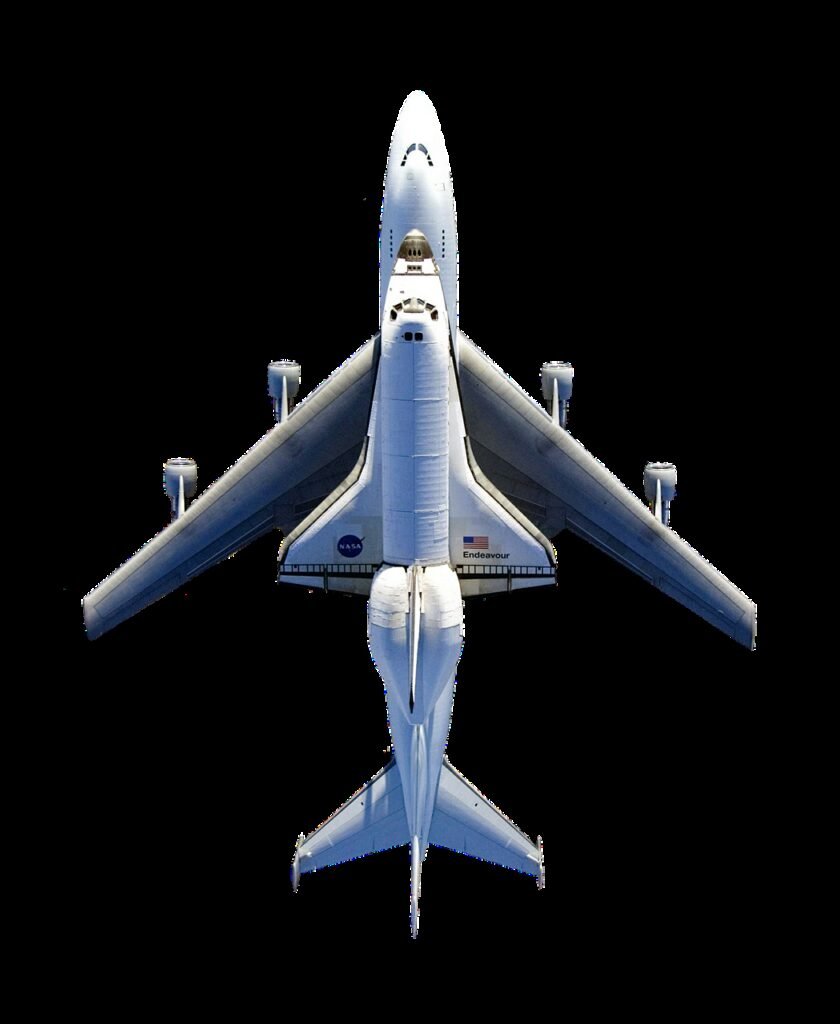NASA needs very strong aircraft to transport its space shuttle. Standard cargo planes were not suitable! So they had an intriguing idea: turn the massive Boeing 747s into “shuttle carriers.”
However, it was no ordinary 747. Initially, NASA closely monitored another large aircraft, the Lockheed C-5 Galaxy. However, they concluded that the low-wing Boeing 747 design would perform better. Besides, they could own the 747 outright, while the Air Force would own the C-5.
Table of Contents
Their very first massive space taxi? In 1974 he purchased a slightly used Boeing 747-100 from American Airlines. Just four years old, that is! But before NASA could tow the spacecraft away, it had to undergo a critical overhaul.

Enhancing the Jumbo Jet’s Flight Level: Particular Modifications for the Shuttle Carrier
To turn the aircraft into a space taxi, significant modifications were required. To support the weight of a space shuttle on its back, they had to first build it exceptionally sturdy! To provide more space, they even extended the body somewhat. To keep the shuttle secure during flight, unique beams were added to the fuselage, such as two front and three powerful arms in the back.
In order to aid the pilot in navigating the aircraft with all that additional weight, the tail also underwent some modifications. The majority of the seats were removed to create additional room inside, but NASA employees’ comfortable first-class seats were retained for those shuttle-carrying flights.
Testing, Testing, 1, 2, 3: Getting Ready for Takeoff
It was time for the big test in 1977! For the first time, they put a space shuttle atop the upgraded 747 to test its flying capabilities. This test was referred to as “captive carry.” It was quite effective! That year, they conducted even more tests, one of which involved releasing the shuttle in midair and allowing it to glide to a self-imposed landing.
N905NA, the first special 747, had a long past before it was converted as a space taxi. It was originally an American Airlines normal passenger aircraft!
A Second Shuttle Carrier Joins the Fleet, Making Two Become One
More than a decade later, NASA received a second 747, N911NA, to assist with all of the shuttle’s movement. Originally constructed for Japan Airlines was this one. N905NA and N911NA are similar in appearance and both gained notoriety for transporting space shuttles. One significant distinction exists, though: the top deck of N911NA is marginally longer.
These two unique 747s completed numerous trips in which they transported space shuttles between various NASA facilities. After the 1986 Challenger accident, they were extremely busy, which is why NASA chose to purchase a second carrier aircraft.

The End of an Era: The Shuttle Carriers’ Retirement
Sadly, NASA’s decision to discontinue space shuttle operations in 2011 put an end to the celebration. N911NA and N905NA were also retired. In 2012, N911NA was even given a unique farewell flight before moving into a new airpark in California.

These two iconic aircraft are now on public display for everyone to see, serving as a constant reminder of the incredible era in which enormous jets were used to transport spacecraft across the sky!
In order to aid the pilot in navigating the aircraft with all that additional weight, the tail also underwent some modifications. The majority of the seats were removed to create additional room inside, but NASA employees’ comfortable first-class seats were retained for those shuttle-carrying flights.
In order to aid the pilot in navigating the aircraft with all that additional weight, the tail also underwent some modifications. The majority of the seats were removed to create additional room inside, but NASA employees’ comfortable first-class seats were retained for those shuttle-carrying flights.
read also : The Bible’s UFO explanation
The 747s That Helped Launch Dreams: NASA’s Shuttle Carrier Story (msn.com)


1 thought on “The Story of NASA Shuttle Carrier: The 747s That Helped Launch Dreams”